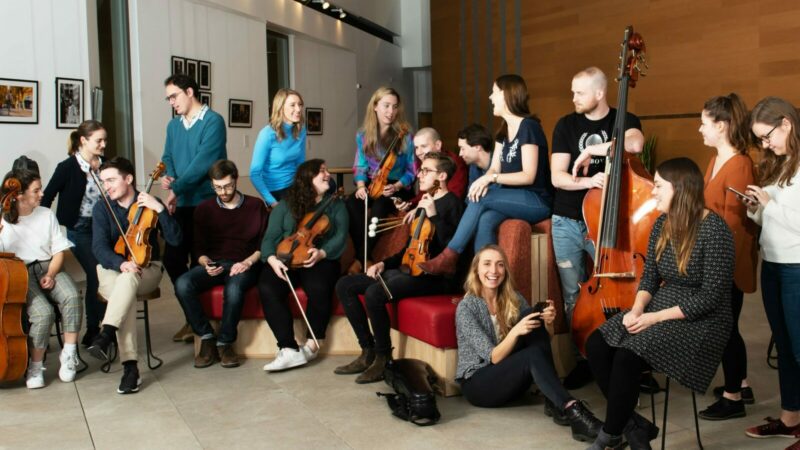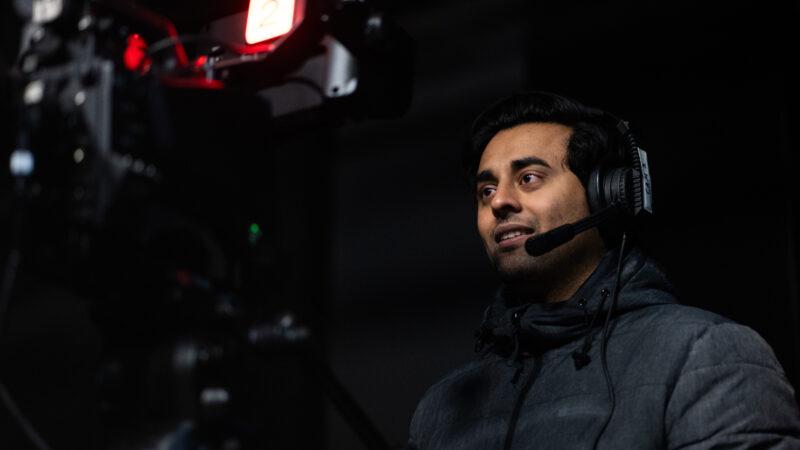Where are we now in terms of contracting for digital rights? Expert Ben Green outlines the current landscape.
Most Framework Rights Agreements across the Performing Arts sector are currently lacking in the necessary rights definitions to enable the producer to distribute the performance or event digitally/online (whether in full, or extracts from it).
The Space has been actively discussing this issue with the main Talent Unions and rights holder representatives in this sector (e.g. Equity, Musicians’ Union, Writers’ Guild & PRS for Music) and, as a first step, has agreed some basic terminology (or ‘lexicon’) around some different digital uses.
UK Theatre (which The Space has been liaising and partnering with on this work) is now due to pick up the above discussion and will seek to agree framework terms for secondary digital uses if and where possible. (N.B. Whilst major companies like the National Theatre and the RSC have already agreed terms for their cinema screenings and associated promotion, terms for digital uses by other theatres and performances are not in place).
Of course, there may be many other contributors and copyright holders included in a piece of theatre or live event, and some of these are not contracted under union terms or frameworks. These will require separate negotiation and agreement.
Please note: This guidance is for general advice only, correct at the time of publication (September 2019). It does not constitute or should be read or interpreted as legal advice. For detailed contractual matters please seek advice from an experienced digital media lawyer or your representative trade body or union if you are a member.
What is the interim guidance for contracting for digital rights at the moment?
1. When an arts organisation, producer or individual is currently using standard rights framework agreements (e.g. Equity, MU)
Until new digital terms are discussed (and hopefully agreed) with the unions, we recommend that you contact the relevant union or rights organisation and seek its advice in the first instance regarding additional digital uses.
It may also advise on (or suggest) appropriate licences and fees. You will find a list of such unions /organisations on the page containing further guiadance.
PRS for Music has its ‘General Entertainment Online’ (or GEOL / GEOL+) licences available for certain uses of music online when the organisation is publishing or making available content itself, and music on third party sites such as YouTube is usually covered under the licences PRS has itself with the major platforms. If in doubt, please get advice from PRS.
N.B. Sometimes the Union /organisation may be able to agree collective terms on behalf of its members, which are then notified to agents. However, if this is not possible, you will need to contact individual contributors or their agent directly to discuss and negotiate terms.
Or
2. Where an arts organisation, producer or individual is NOT currently using union members / agreements
Building on the earlier ‘Beginners guide to digital rights’, the following guidance is designed to assist those working outside of union terms and agreements.
There may be circumstances whereby you may wish to seek additional rights to enable digital or online distribution and uses of the performance or event. These could include, for example:
- a non-commercial stream of a live performance on a digital platform (as live, or ‘near live’).
- making a recording of the performance or event available ‘on demand’, for users to access whenever they wish (perhaps for a limited time period). For example, on your company’s own website or via a third party VOD (video on demand) platform such as You Tube or Vimeo.
- a short promotional extract(s) for marketing purposes on your company’s own website or via social media like Twitter or Facebook.
In case you’ve not seen them yet, there are descriptions of all of the above uses, and example clauses of how they might be seen in a contract, in the Digital Rights – Lexicon.
What do I need to consider before I create a contract covering digital rights?
As part of your overall distribution and marketing plan, consider what, how and where you wish to use or distribute the performance as early as possible – ideally before you start contracting any/everyone. If you decide later, you may have to then re-visit or renegotiate every contract to acquire extra rights, so careful consideration will save time and money in the long run.
One strategy might be to seek – if you can get it – an ‘all rights, all media buyout’ for a fee (and do mention this upfront at the start of any conversation), then you will only need to discuss and agree the fee.
However, if you do not wish to use this strategy (or are unable to agree) the above ‘all rights’ position, then to help inform the extent of the rights you require you should really know the answers to at least the following before discussing terms or making any offer:
- What? – what exactly are you wanting to publish or distribute? The full performance, or just an extract?
- Have you recorded it yourself, or contracted a third party production company to? (if the latter, what rights does the production company have in the recording?)
- How? – the method of distribution (e.g. your own/ company website, via a third party site/platform or on social media? N.B. If via any third party, do remember to check carefully the rights you will be granting to them under their Terms & Conditions!)
- Are you offering it Live, or a recording of the performance on-demand?
- Are you wanting to offer it freely to the user/ audience? (N.B. you may still have to pay your contributors for this use, even though you might decide to offer it for free!) Or you might think it should be offered commercially, in which case what is the revenue model? Subscription? Advertisement-funded? Pay to View on an individual temporary basis, or permanent download copy? All of these types of use and models may require separate negotiation and / or payments (either a ‘residual’, one-off payment for a time period, or an ongoing ‘royalty’ when a percentage share of revenue goes to the contributor / rights holder).
- Where? – the territory you need to specify (global, or limited to a specific country or area? – if the latter, then either you or the third party platform will need technical capability (often called ‘Geo-blocking’) to ensure you protect and limit the availability of your digital asset to such territory)
- Who? – does the recording or extract contain all the performers, or just some of them? And what about other existing copyright works such as existing music, still photographs, artworks, or third party film footage? Remember that you are likely to need permission from each contributor or copyright holder to put their work up online)
- How long for? – often described contractually as the ‘Term’, the licence period can be anything from a one-off performance of a live event, through to a brief ‘catch up’ on demand period (e.g. 7 days, one month), to a longer availability. Do consider (as rights holders will) whether a longer ‘free’ availability will have an impact on any commercial potential.
- Why? – Being really clear about why you want to do all of the above will help your conversations with rights holders. They are far more likely to agree permission and terms if they can see a valid reason(s) why you wish to use or publish their work in a certain way.
It’s important to think about these questions as soon as you can. If you can’t get the rights to do what you want to do, that could scupper the whole creative project.
And finally, once you’ve posted something online, don’t necessarily think that the work stops there. You might need to manage your rights afterwards, for example you might need to remove a recording from your website after a year or six months, or you might have to report music to the PRS, or have to pay people at different stages. So, both think ahead and get your rights organised, and you’ll keep everyone happy…
How much should I pay?
Often called in contracts ‘the Consideration’ (i.e. the fees paid by the Producer or commissioning party to the Contributor in exchange for certain work or rights), the fees for different rights naturally vary depending on the type of use or distribution, the licence term, territory, non-commercial/ commercial, etc.
You might seek to base a fee on a broadly similar use or model type found in industry agreements, but until minimum terms and rates are agreed with the unions and rights holder organisations for the ever-expanding number of digital uses, there are currently no set fees or rates so producers are currently having to use ‘trial and error’. Or they seek help from others who have been in a similar situation.
Producers are often surprised how expensive clearance costs can be, particularly in the areas of existing commercial sound recordings (e.g. pop music) and third party archive film footage, which can amount to hundreds of pounds per minute. Both of these areas also have multiple layers of rights holders and can be fiendishly complex and extremely resource-heavy to clear. It is therefore good practice to (i) clear/cost these items as early as possible when planning digital distribution, and (ii) find an alternative if possible that is clearable and within your budget.

With more non-commercial projects an often effective way of being fair to everyone to deliver the project on an equal footing, you might offer all the contributors the same fee and terms. This has the added benefit of saving a great deal of time for everyone by not having to negotiate different fees and terms with every individual. Some agents might then wish to agree so-called ‘favoured nations’ terms / fees:- everyone receives the same deal, and if anyone later receives a more favourable deal then that same preferable deal must then be honoured to the others. This can be useful, but be warned that there have been examples when this has back-fired: when the project later employed ‘star talent’ (when it was re-cast) and the producer was then held under ‘favoured nations’ terms to paying all other cast members the same!
Promotional use – it would be reasonable to request some promotional (and historical record) rights using the contribution, to permit marketing and promotion of the performance or event on different digital platforms. Ideally this use should attract no further payment to the contributor, but for this free use it’s fair to limit the amount of extracts you publish (e.g a reasonable limit would be, say, up to 1-2 minutes duration per clip, with a total of up to 5 minutes maximum of clips per hour of original performance).
One approach to help secure these rights (if difficult, and it’s not too onerous for you to provide) is to suggest to the contributor that they may also use the extract for their own promotional purposes (e.g. for their own showreel), but this must be subject to them clearing the rights of other contributors and copyright holders.
Is there anything else I need to consider in terms of contracting?
Protecting the rights of the Producer
Potentially, IP in a recording may be shared between any number of interested parties: digital producers, theatres, creatives and designers, co-producers, commissioners / funding bodies, investors, etc., so it makes prudent business sense to know exactly what each party’s rights and interests are in order to avoid potential breaches of contract or conflicting rights being exploited.
Any rights contracts should therefore be aligned to reflect the different parties’ interests, in order that the recording can be used and distributed correctly (either non-commercially or commercially).
Warranties / Indemnities / E&O Insurance
It is standard practice that a contract with a contributor includes warranty and indemnity clauses. This is put in place in order that both parties ‘warrant’ that they have done certain things in terms of their obligations (and rights granted) to each other, so, for example, a writer may warrant to the producer that their script is original and doesn’t infringe the copyright of another, or warrant that the script is not libellous or defamatory.
An indemnity is included when one party wishes the other to ‘indemnify’ them from legal actions by third parties (e.g. if there was a claim for copyright infringement in the script, the writer might be expected to indemnify the producer). Including an indemnity gives the producer an ability to claim more in terms of losses.
A producer should clear the necessary rights to third party contributors and copyrights in a production. However, there are times when something slips through the net and claims are made. Producers can put in place ‘Errors and Omissions’ (E&O) insurance to cover themselves in the event of such claims, and the Producer will then be required to satisfy the insurer that best efforts were made to clear and contract the relevant rights holder.
Most broadcasters are now expecting or asking independent producers to take out E&O insurance on any recordings provided to them, so you may wish to consider this as a sensible policy for your recording(s).
UK Law
If you are contracting in the UK, your contracts with contributors should reflect that the terms will be governed by the laws of England, Wales and Scotland, along the lines of this clause or similar:
Governing Law
The validity and interpretation of this Agreement shall be governed by the laws of England and any dispute arising thereof shall be submitted non-exclusively to the English Courts.
N.B. Should you be contracting or licensing ex-UK contributors or copyright, it is particularly important to have a Governing Law clause, and in an ideal world this should be under UK legal jurisdiction. You may find that the third party is seeking for the contract to be governed by their local jurisdiction and this can be a risk and incur significant additional costs. For example, US contracts often refer to governance by their local laws, so if a UK producer ended up in court subject to US legal governance, then he/she may be required to seek specialist US legal advice or an attorney familiar with US law to represent them.
Conclusion: contracting
Rights is a complex area: with multiple layers of ownership, no global database of who owns what or where to find them, and trying to ‘get it right’ when you are contracting or clearing existing copyrights, it can all seem completely overwhelming! It’s no wonder that some people just put their head in the sand and decide to take the risk to use material without permission/ clearance and cross their fingers that nobody claims.
However, the ‘head in the sand’ approach is neither a sensible or legal way to proceed, and you should be diligent in your contracting and clearances. A great deal of this is common sense, and if you have considered the questions and issues in this document and thought about the answers, you will be a long way ahead of most people when starting to looking at contracts or clearances in preparation for your digital distribution strategy. Online and digital distribution is an important and worthwhile activity that CAN be done well if you navigate the rights sensibly and pragmatically.
The Space is working hard to try and find a way through this complex area, so that arts organisations and individuals can source some straightforward guidance and advice on how best to secure the necessary rights to enable digital distribution of their work. Please do feed back to us any additional areas of advice that you think would be useful.
Through a combination of online guidance, toolkits and forthcoming workshops for practitioners, this work will continue throughout 2019/20 as part of its commitment to the Department for Digital Culture Media and Sport under the ‘Culture Is Digital’ initiative. The Space, in partnership with UK Theatre, is continuing to actively demonstrate to rights holders’ organisations the benefits and opportunities of being digitally engaged with audiences, with the hope (and need) to then modernise framework agreements to include digital uses where possible.
Ben Green is the Founder and Director of Ben Green Associates, a company focused on digital rights strategy, negotiation and management. He was previously Head of Rights Business Development at the BBC, and has worked with organisations including the V&A, Tate Britain and the British Museum. He was speaking to Eleanor Turney.

How useful was this resource?




